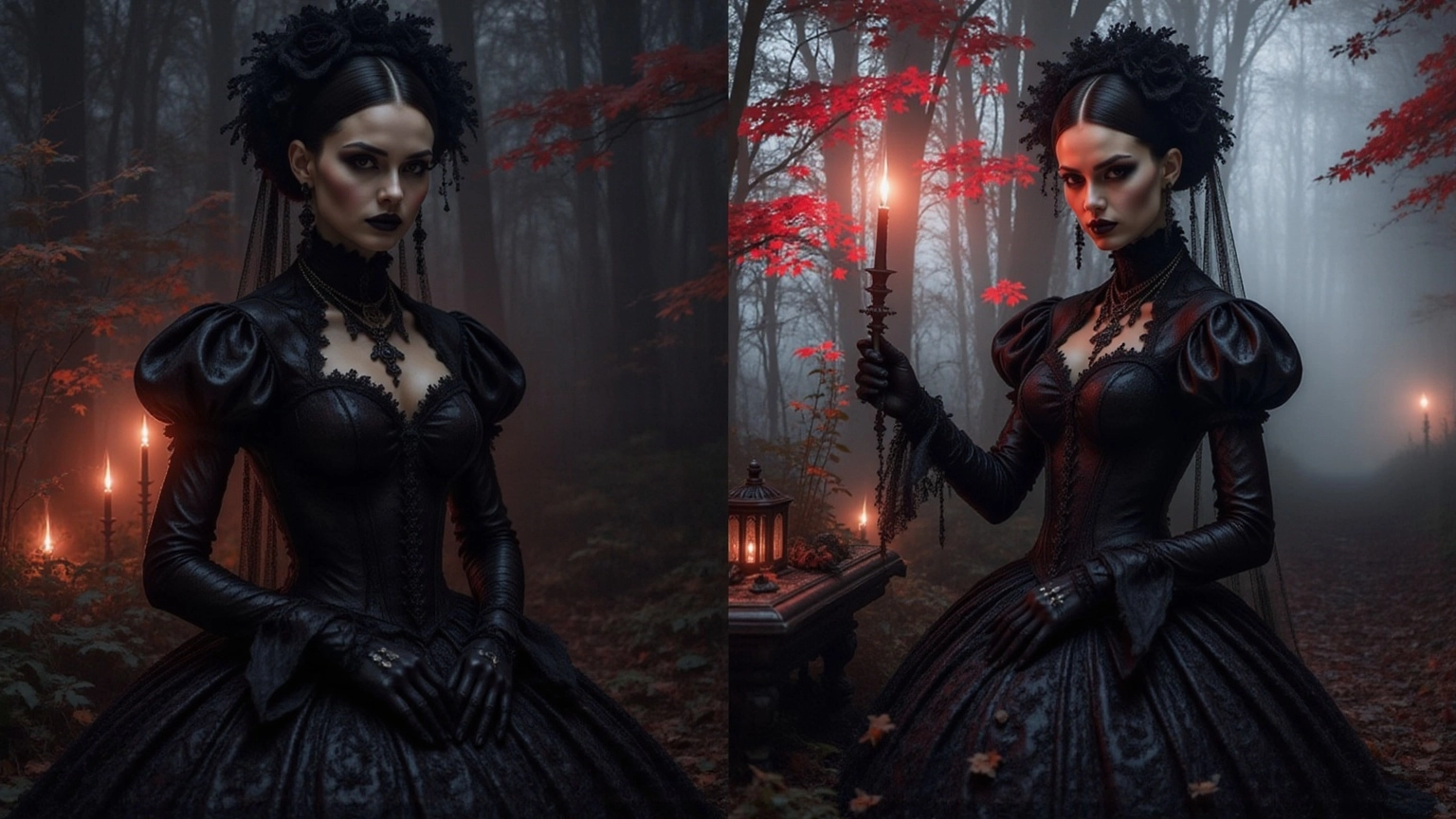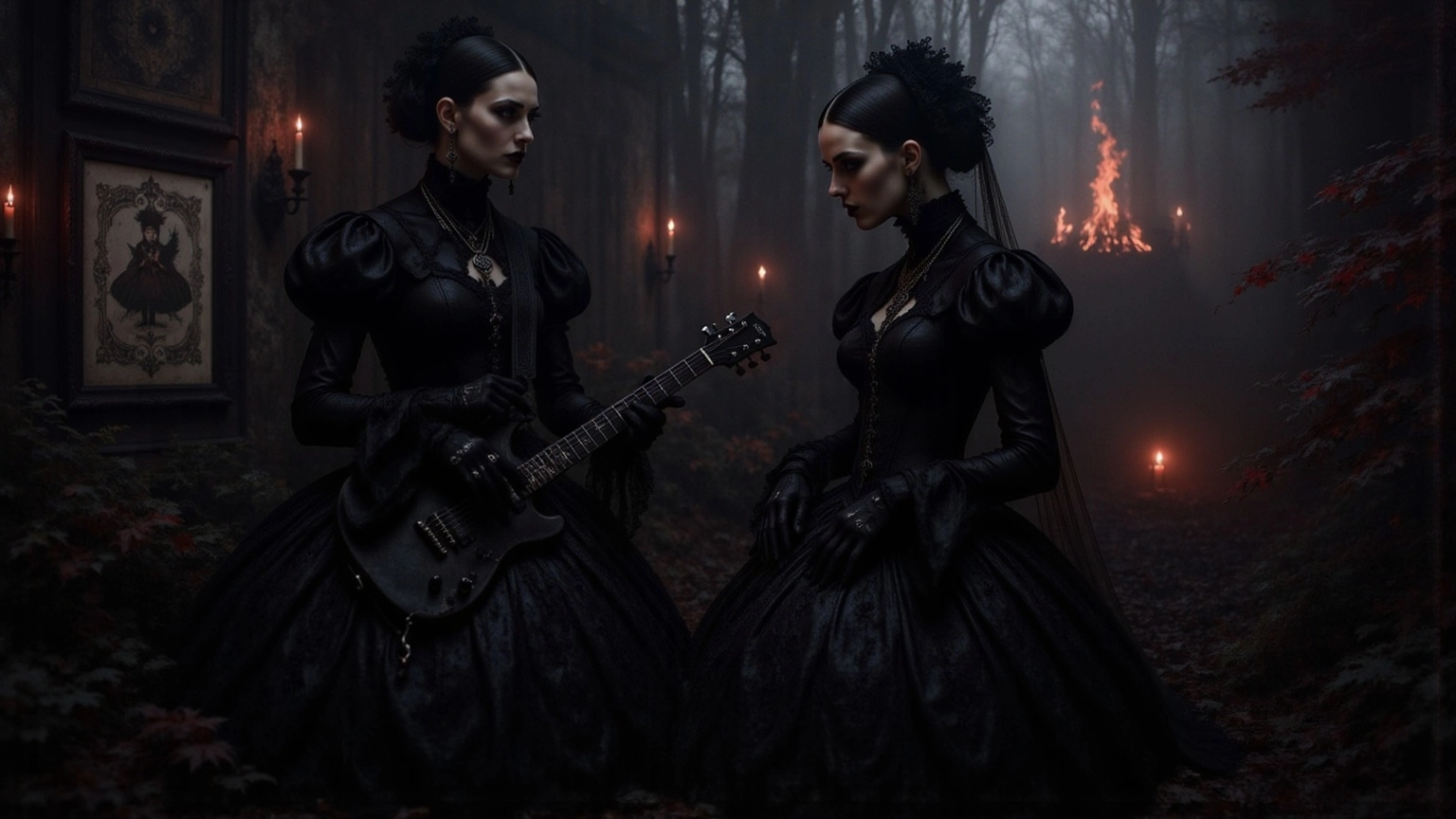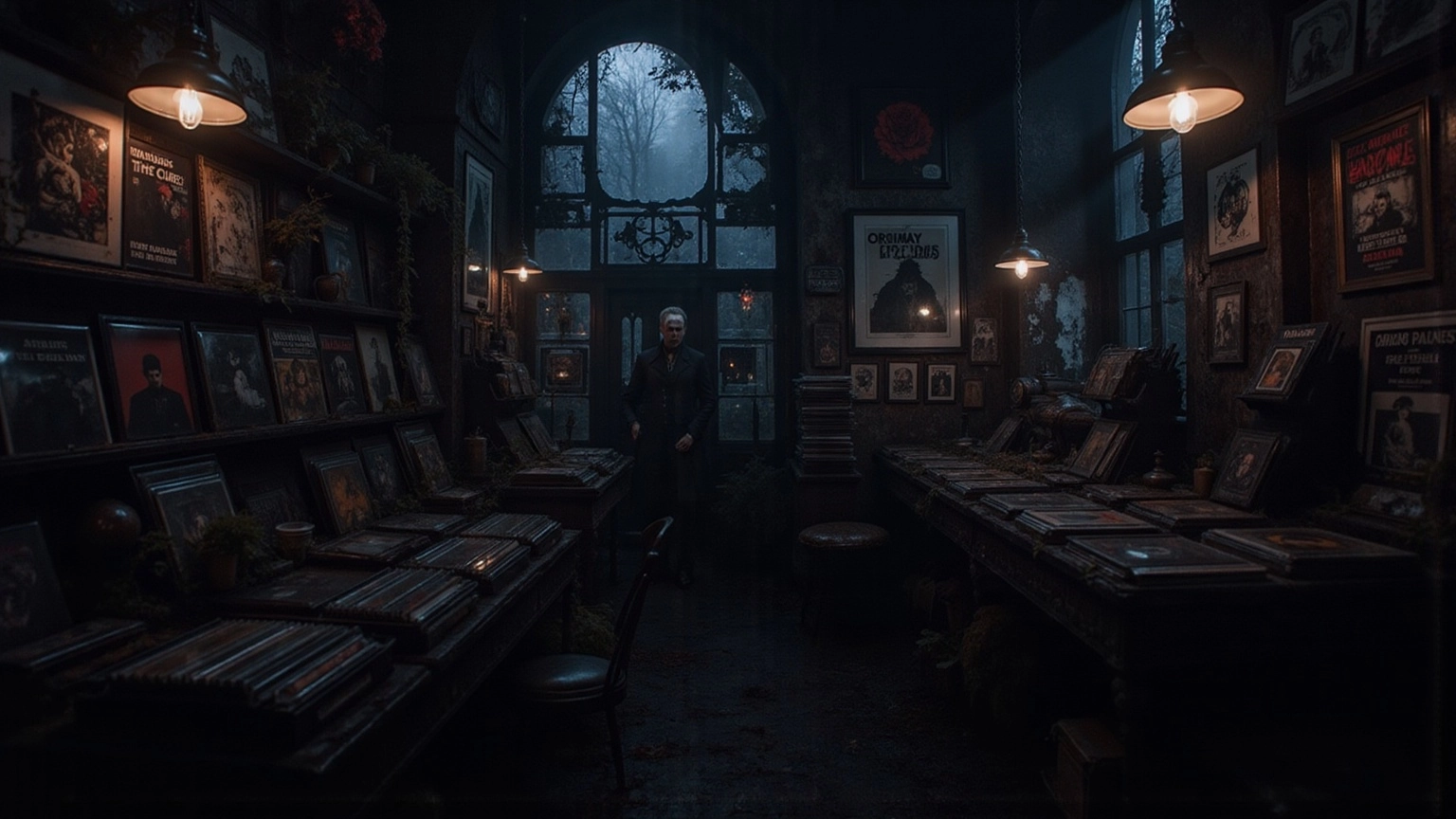
Goth and Rock: Exploring Their Cultural Divide and Influence
Share
Overview
This article delves into the chasm between goth and rock music, revealing the shadows and sparks that define their essence.
Picture goth music—its darker themes, introspective lyrics—emerging from the post-punk abyss.
Now contrast that with the vibrant rebellion of rock, a genre bursting with life and defiance.
Yet, beneath their surface differences lies a web of mutual influence, weaving together a tapestry that has significantly shaped contemporary culture and youth identity.
Dive deeper, and you’ll find the echoes of these genres whispering through the hearts of those who dare to embrace their complexities.
Introduction
Music history is a rich tapestry, woven with contrasting threads, and few genres embody this dichotomy as starkly as goth and rock. Emerging from a shared lineage, these two styles diverge dramatically—each a reflection of its own themes, aesthetics, and cultural identities. This article plunges into the intricate relationship between goth and rock, revealing how their distinct characteristics shape not just the music but the emotional landscapes of their listeners. Yet, as the dark allure of goth continues to captivate a devoted following, one must ask: what deeper implications do these genres hold for youth culture and identity in an ever-evolving musical landscape?
Defining Goth and Rock Music: Origins and Characteristics
Goth sounds erupted from the post-punk scene in the late 1970s, dripping with dark, melancholic tones and themes that dance around existentialism, death, and the supernatural. Pioneering bands like Bauhaus and Siouxsie and the Banshees carved the path for this genre, marked by haunting minor chords, reverb, and atmospheric instrumentation. Take Bauhaus's iconic track 'Bela Lugosi's Dead'—a slow, tense build-up that conjures shadowy figures and the pulse of nightlife.
But wait, this genre, which has roots stretching back to the 1950s, embraces a spectrum of styles, from classic to punk and metal. It’s a celebration of powerful backbeats, electric guitar riffs, and defiant lyrical themes that burst with life. Yet, while both goth and rock share the rock and roll lineage, goth's darker themes and aesthetics carve out a distinct cultural identity, one that resonates deeply with those drawn to its alluring shadows.
Recent studies reveal that dark genre tunes hold a special place in the hearts of teenagers, with around 10% showing a fierce inclination toward it—though this passion tends to wane with age. Among 15-year-olds, 10.8% of boys and 4.3% of girls express a strong preference for these dark tunes, highlighting its gripping demographic appeal. This evolution underscores the post-punk scene's enduring influence on the rise of a dark subculture, affirming its vital role in modern culture.
Moreover, studies suggest a connection between alternative genre preferences and heightened depressive symptoms in teens, hinting that this style not only offers a sense of identity but also reflects deeper emotional struggles. So, what does this mean for you? Dive into the shadows and explore the intoxicating depths of this culture—it’s a journey worth taking.
Cultural Aesthetics: The Visual and Thematic Divide
The goth and rock culture screams with dark clothing, dramatic makeup, and an aesthetic that embraces the macabre and romanticism. Followers drape themselves in black lace, leather, and Victorian-inspired attire, forging a striking visual identity that echoes the themes of their art. Dark genre tunes dive deep into love, loss, and the supernatural, weaving a rich tapestry of emotional expression that pulls listeners into a realm of introspection and sorrow. A mere 4% to 11% of adolescents gravitate toward this niche, highlighting its unique appeal within youth culture.
In stark contrast, rock music bursts forth with a broader spectrum of aesthetics, from the flamboyant glam rock styles to the gritty grunge of the '90s. Rock celebrates rebellion, freedom, and personal expression, with visuals that pulse with vibrancy and energy, reflecting the genre's diverse influences. This divergence in aesthetics not only separates the genres but also shapes how fans relate to and express their identities within these cultural frameworks.
Recent trends unveil a resurgence in dark fashion, heavily influenced by contemporary media, where styles meld Victorian elements with modern updates. By 2025, alternative fashion statistics reveal a significant surge in oversized silhouettes and dark, layered outfits, captivating a demographic that craves both nostalgia and innovation. The dark subculture, often seen as niche, has experienced a notable rise in visibility, attracting a varied array of individuals seeking comfort and community within its embrace. Yet, a stark reality persists: 37% of adolescents identifying as Goth report self-harm, compared to just 10% of non-Goths, underscoring the mental health implications tied to this identity.
The thematic distinctions between dark alternative and contemporary genres transcend mere appearances; they unveil richer cultural narratives. While gothic tunes often evoke a romantic-pessimistic outlook, as noted by Rutledge et al., the genres of goth and rock revel in a more assertive and liberated spirit. This contrast influences not only the sound but also the visual themes that followers adopt, ultimately shaping their identities in profound ways. As the dark subculture revival gains momentum, it underscores the enduring power of visual aesthetics in articulating cultural identity and emotional depth.

Evolution and Influence: How Goth and Rock Have Shaped Each Other
Gothic tunes? They trace their roots deep into punk's shadowy embrace. Influential groups like The Cure and Joy Division wove darker themes and haunting sounds into their very fabric. As dark culture morphed, it seeped into mainstream music, birthing subgenres like goth and rock, along with darkwave. From 1982 to 1986, these musicians dominated—60% of the Hot 100 positions were theirs, a testament to their reign and the evolution of dark wave.
But wait—popular music didn’t just watch from the sidelines. It embraced elements of goth and rock, especially during its experimental phases. Remember Aerosmith and Run-D.M.C.'s 'Walk This Way' in '86? That audacious blend of rock and hip-hop showcased the genre's adaptability and willingness to push boundaries.
This fusion of styles created a rich tapestry of sound, with artists seamlessly transitioning between goth and rock genres. It’s a dance of mutual influence, emphasizing how musical styles can morph and redefine one another over time. Recent collaborations with rock icons like the Foo Fighters further highlight this dynamic. The significance and flexibility of both styles continue to pulse through the veins of today’s musical landscape. Are you ready to explore this darkly seductive world?

Key Bands and Albums: A Comparative Analysis
In the shadowy realm of dark music, iconic albums like Bauhaus's 'In the Flat Field' and The Cure's 'Disintegration' resonate with haunting melodies and introspective lyrics that define the aesthetic. These masterpieces not only shaped the dark music landscape but also left their mark on countless artists across genres. Bands like Siouxsie and the Banshees and Sisters of Mercy carved their paths, etching a lasting influence on the evolution of this style. Notably, 'The Ultimate Record Collection includes 200 greatest goth albums,' a testament to the genre's rich history and profound impact.
On the stone side, classic albums such as Led Zeppelin's 'IV' and The Rolling Stones' 'Exile on Main St.' showcase the style's eclectic nature, fusing hard sounds with bluesy undertones. The Beatles' 'Sgt. Pepper's Lonely Hearts Club Band' shattered norms with its experimental flair, paving the way for future artists to venture into uncharted sonic territories. Robert Smith of The Cure once declared, "I wanted to make the ultimate fuck-off record," a bold proclamation that encapsulates the audacious spirit behind these influential works.
By juxtaposing these pivotal albums, we unveil how both genres of goth and rock have not only carved out their distinct sounds but also shaped the broader sonic landscape. The reverberations of these groundbreaking albums linger, highlighting the enduring legacy of both goth and rock styles in today's soundscape. Moreover, case studies like the 'Otherworldly Benefits of THCA' reveal how the cultural significance of these albums transcends music, inspiring lifestyle brands like Darc Arts that celebrate the convergence of wellness and artistic expression.

Conclusion
Goth and rock music—two distinct yet intertwined cultural phenomena—have not only shaped the music landscape but also carved out the identities of their followers. Goth music, steeped in darker themes and aesthetics of existentialism and the supernatural, stands in contrast to rock, which celebrates a broader spectrum of expression, from rebellion to personal freedom. This cultural divide reveals how each genre serves as a unique lens for fans to explore their emotions and identities, enriching the vibrant tapestry of modern music.
Key insights emerge from the origins and characteristics of both genres, their visual and thematic aesthetics, and their mutual influences over time. The rise of goth from the post-punk scene and its evolution alongside rock illustrate a dynamic interplay between these musical styles. Dive into the exploration of iconic bands and albums, and you'll uncover how both genres have left an indelible mark on contemporary culture, resonating with audiences and inspiring new generations of artists.
But what does it all mean? Reflecting on the significance of goth and rock music unveils a deeper understanding of how cultural identities are formed and expressed. As these genres continue to evolve, they invite listeners to engage with their complexities and embrace the emotional narratives they convey. Whether you’re drawn to the haunting melodies of goth or the vibrant energy of rock, exploring these musical realms offers a powerful means of connection and self-discovery. This journey not only honors the rich legacies of both genres but also ignites a celebration of the diverse experiences that music can provide.
Frequently Asked Questions
What are the origins of goth music?
Goth music originated from the post-punk scene in the late 1970s, characterized by dark, melancholic tones and themes related to existentialism, death, and the supernatural.
Which bands are considered pioneers of the goth genre?
Pioneering bands of the goth genre include Bauhaus and Siouxsie and the Banshees, known for their haunting minor chords and atmospheric instrumentation.
How does goth music differ from rock music?
While both goth and rock share a rock and roll lineage, goth music is distinguished by its darker themes and aesthetics, creating a unique cultural identity that resonates with its audience.
What musical elements define goth music?
Goth music is marked by powerful backbeats, electric guitar riffs, and defiant lyrical themes, often featuring haunting melodies and atmospheric sounds.
What demographic shows a preference for dark genre music?
Recent studies indicate that around 10% of teenagers show a strong inclination toward dark genre music, with 10.8% of boys and 4.3% of girls aged 15 expressing a preference for it.
How does the preference for dark music relate to emotional struggles in teens?
Studies suggest a connection between alternative genre preferences, including goth music, and heightened depressive symptoms in teens, indicating that this music may reflect deeper emotional struggles and provide a sense of identity.
What cultural significance does the goth genre hold?
The goth genre plays a vital role in modern culture, highlighting the enduring influence of the post-punk scene and its appeal to those drawn to its darker themes and aesthetics.
